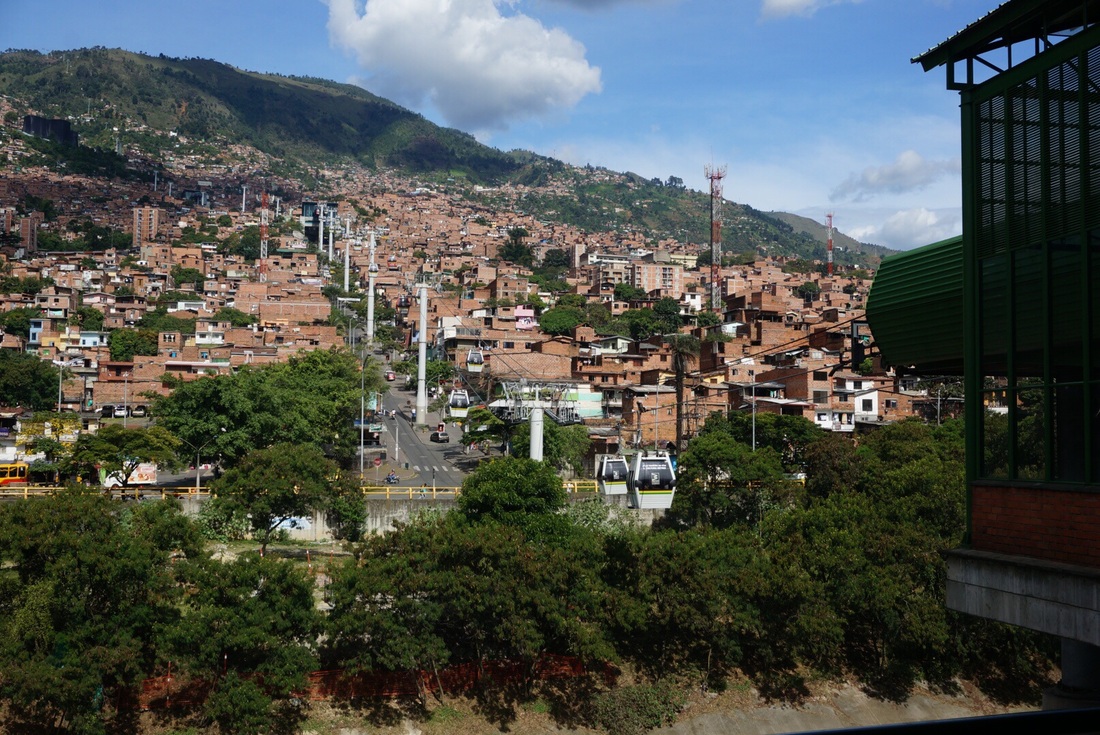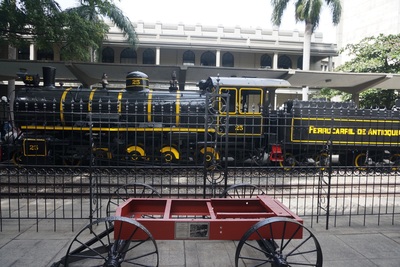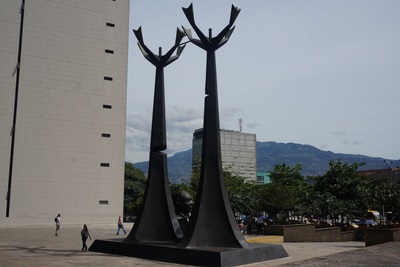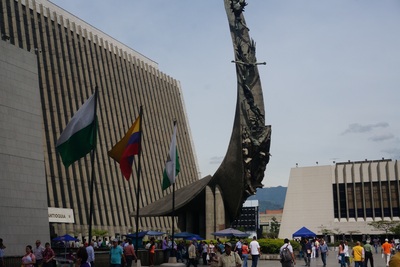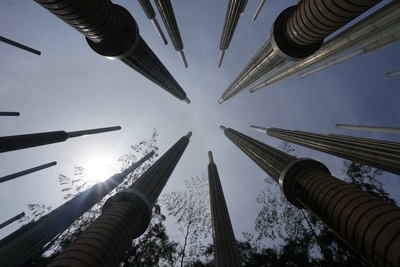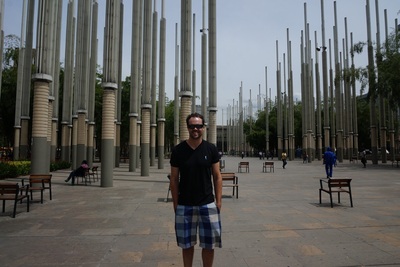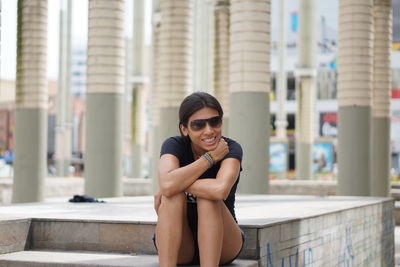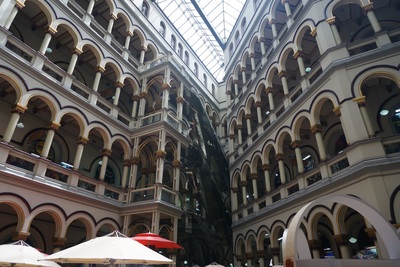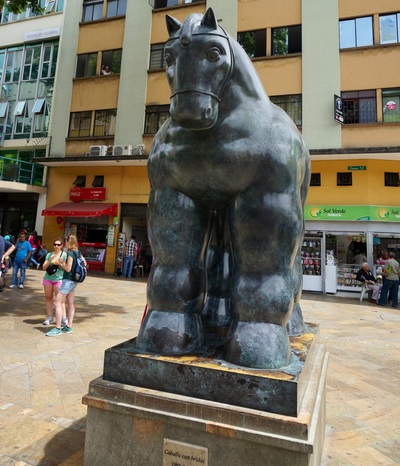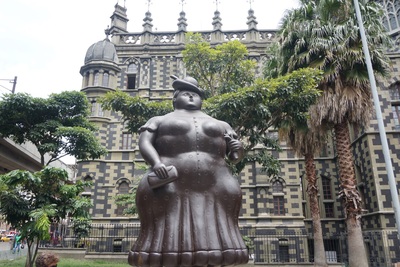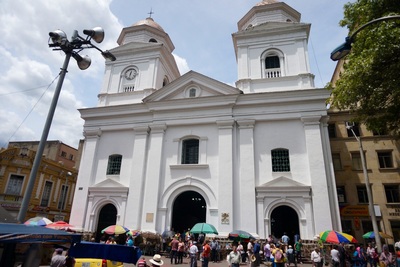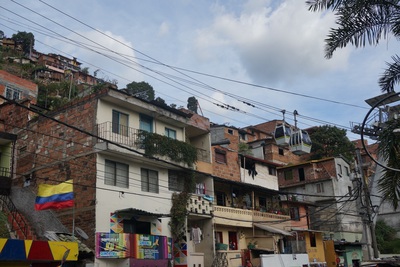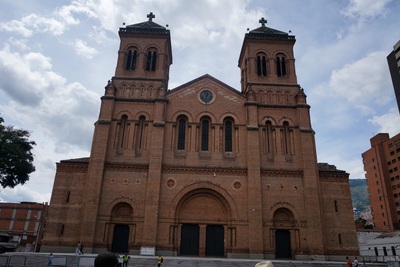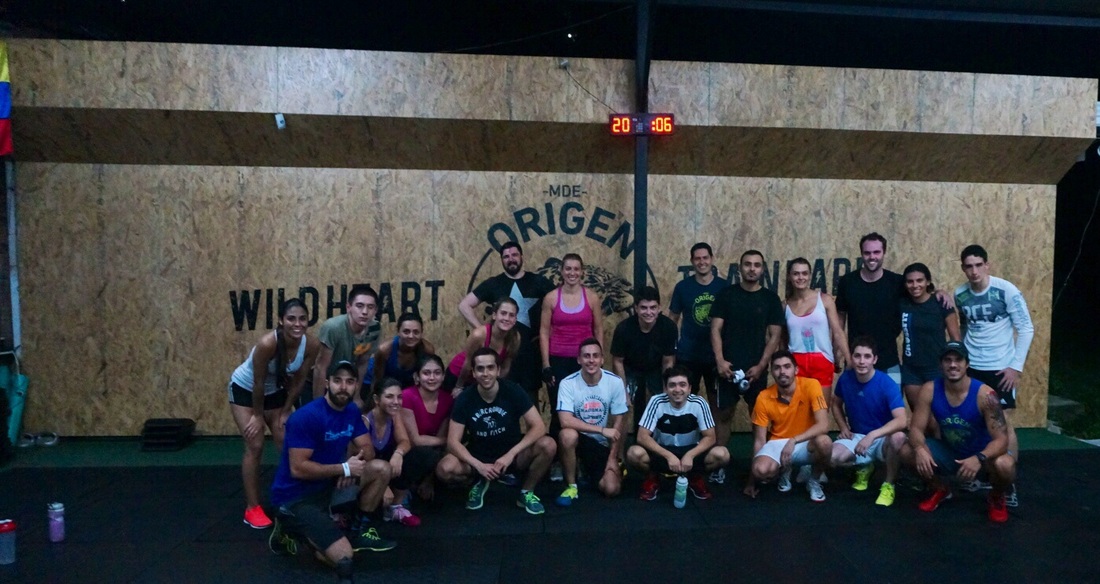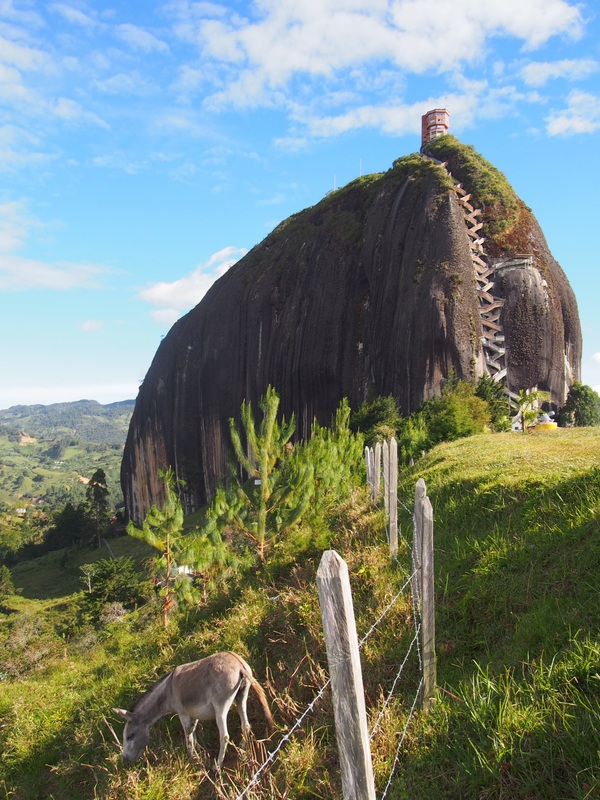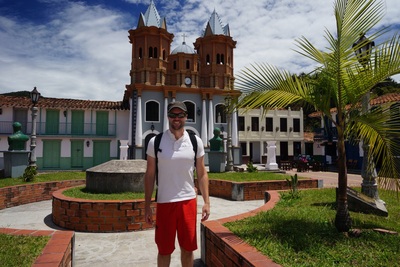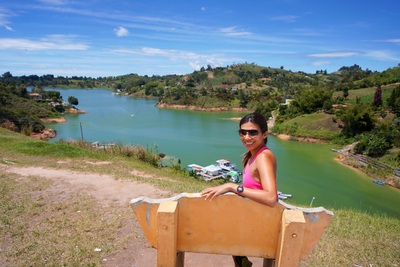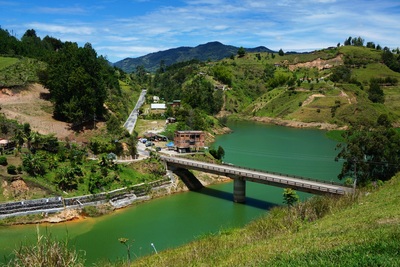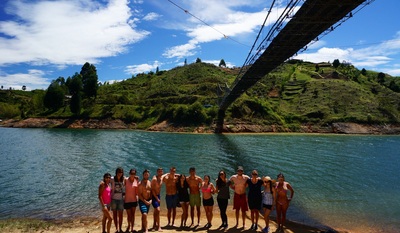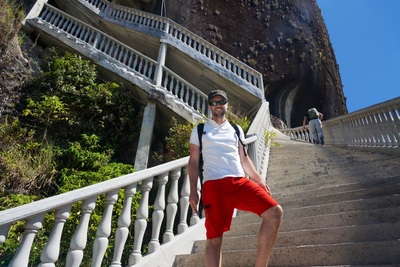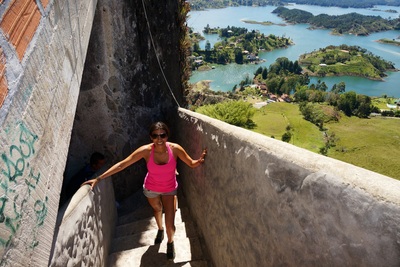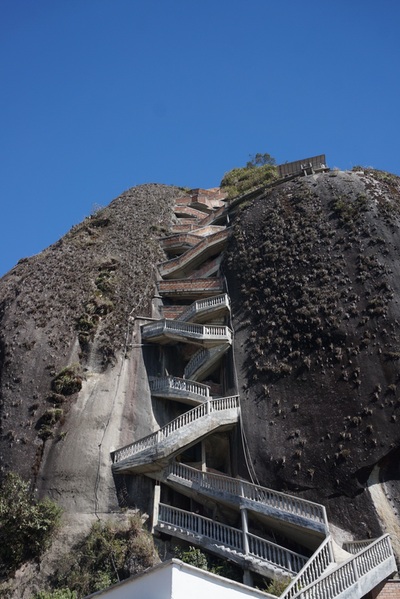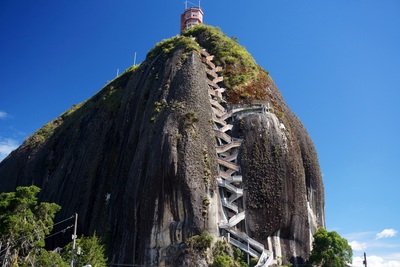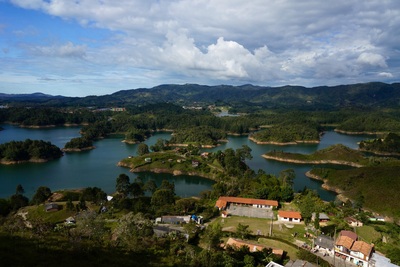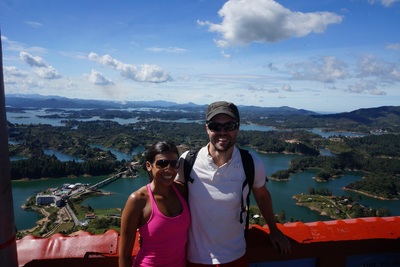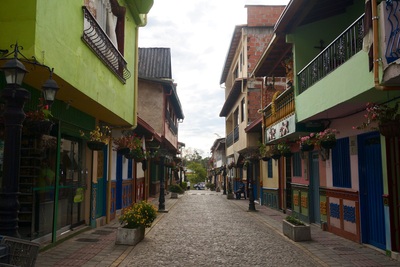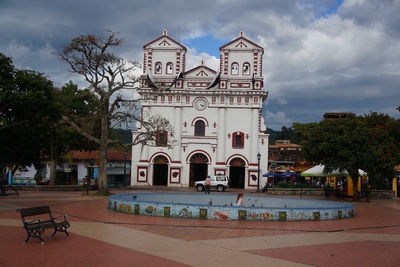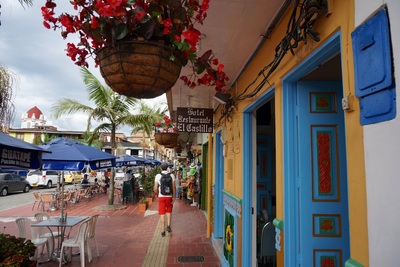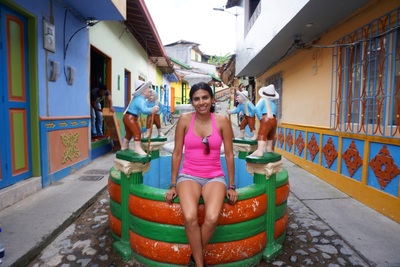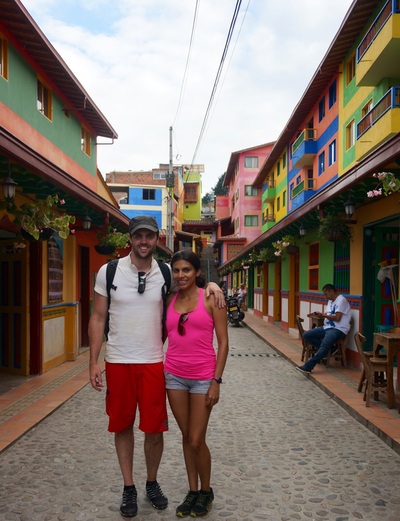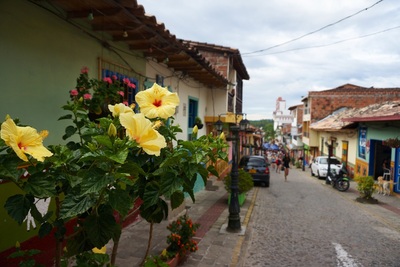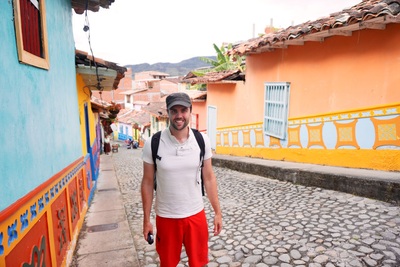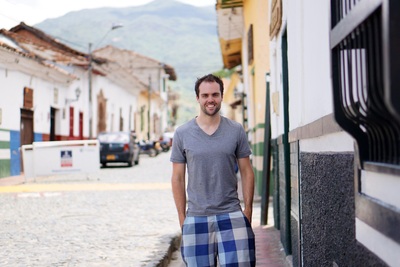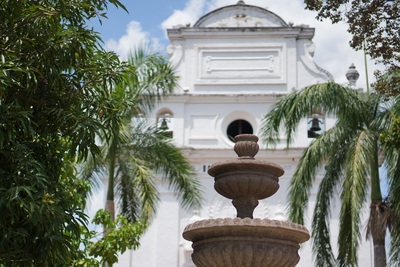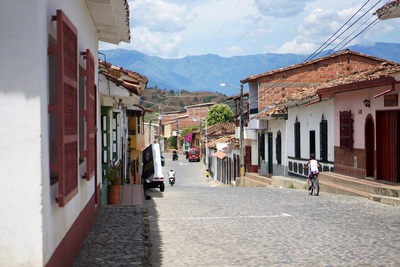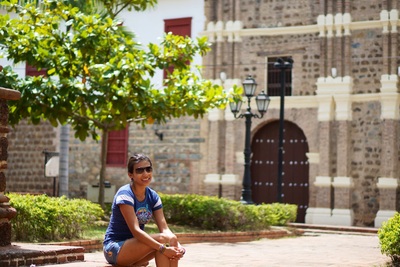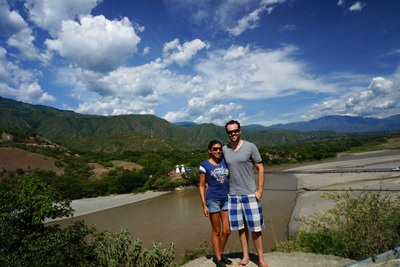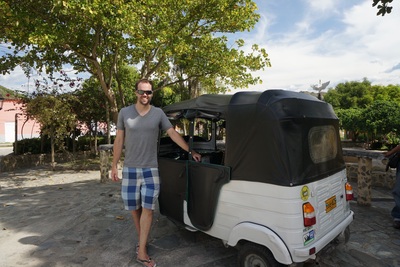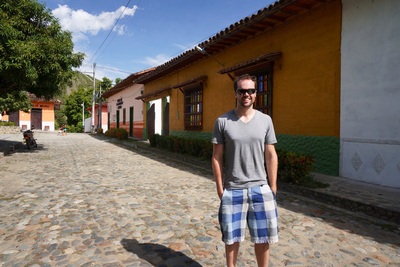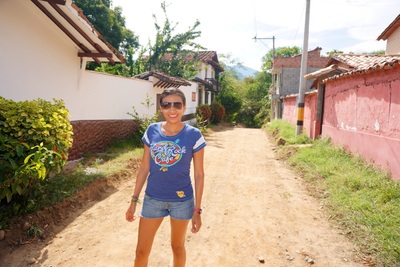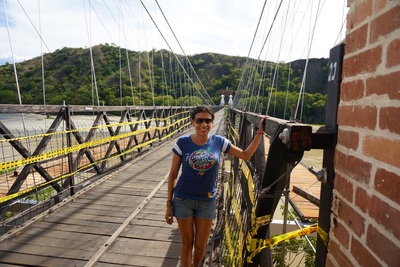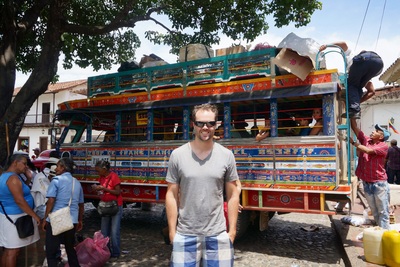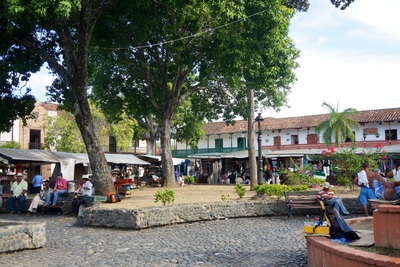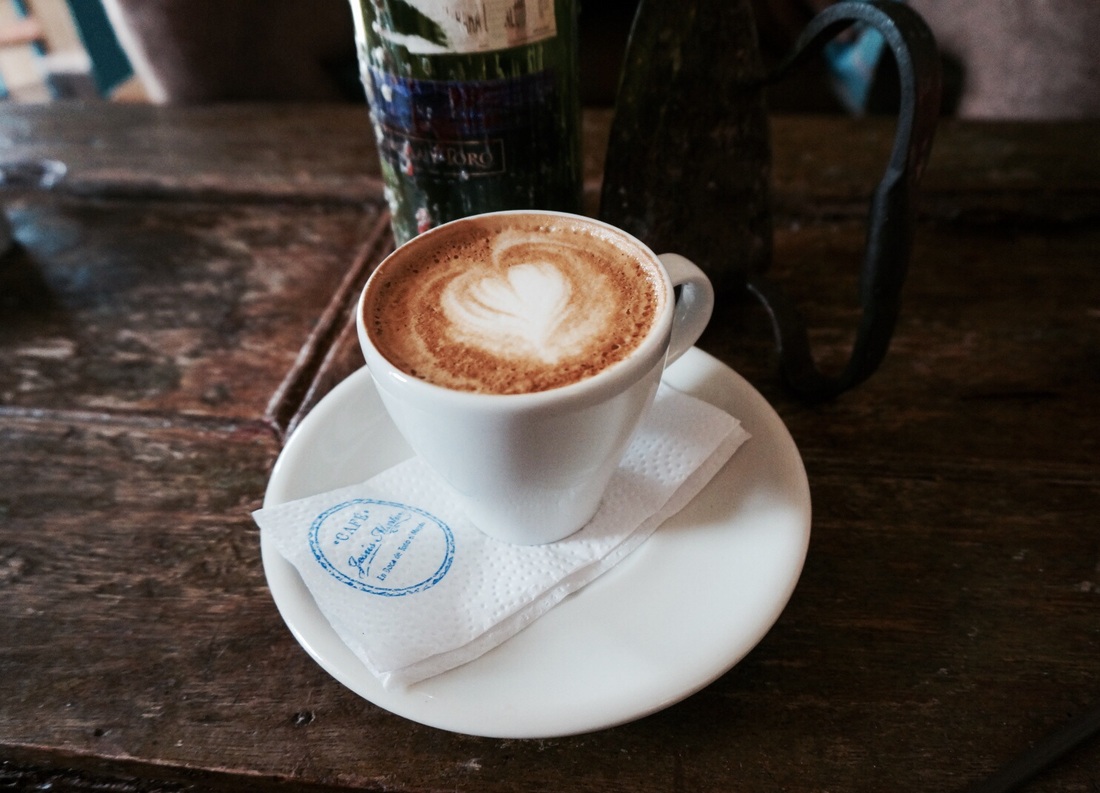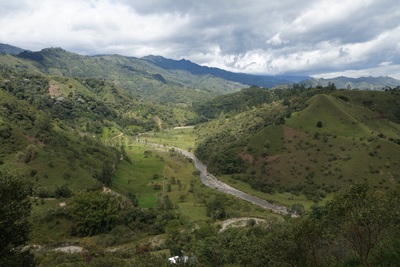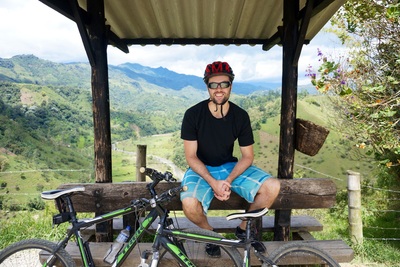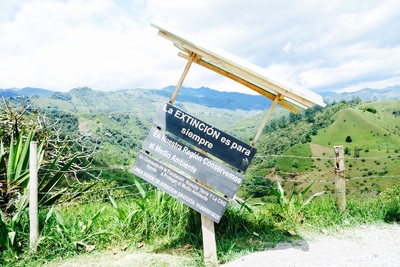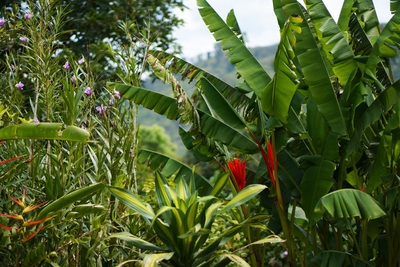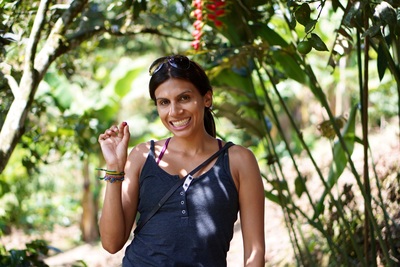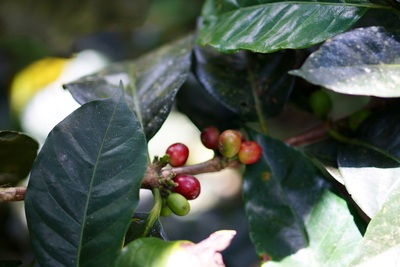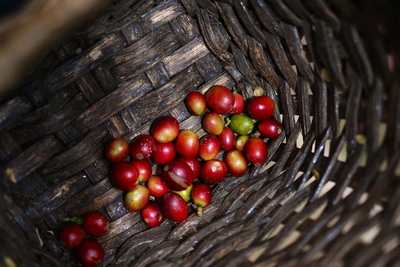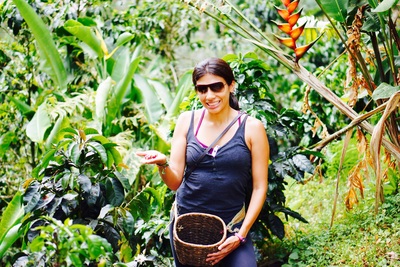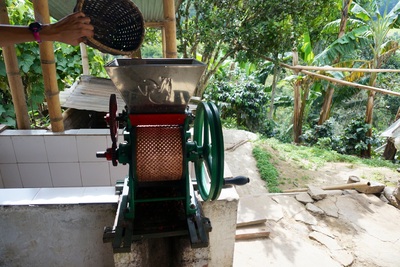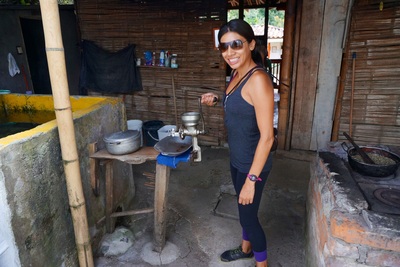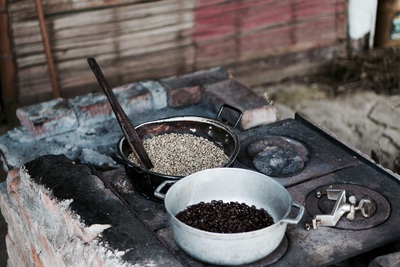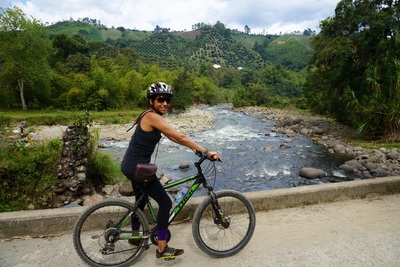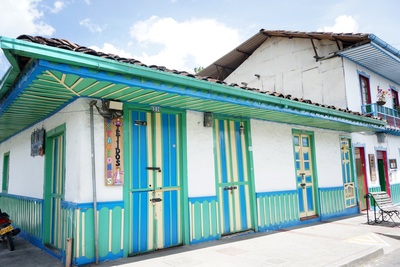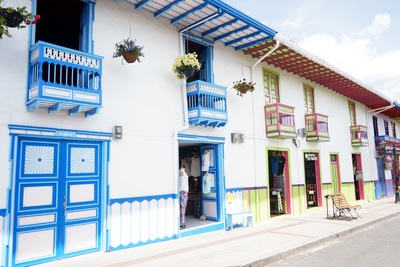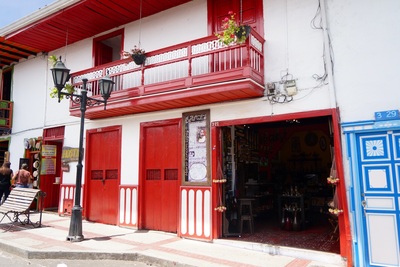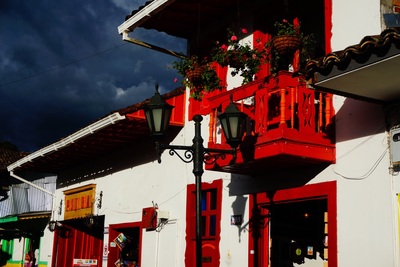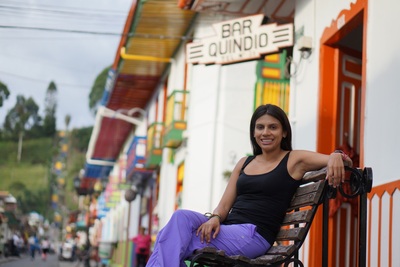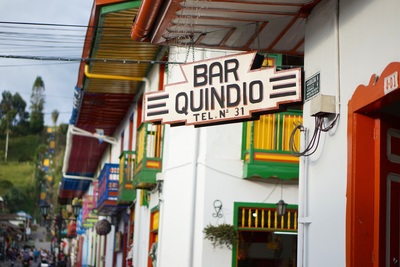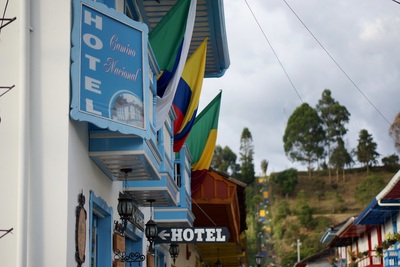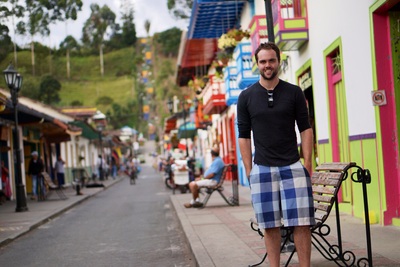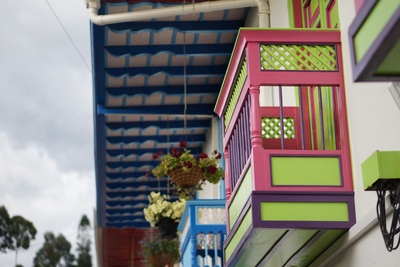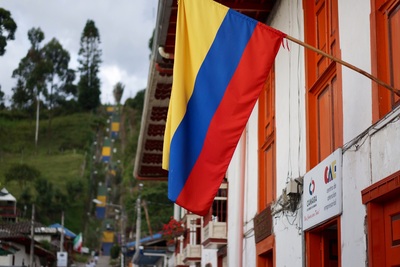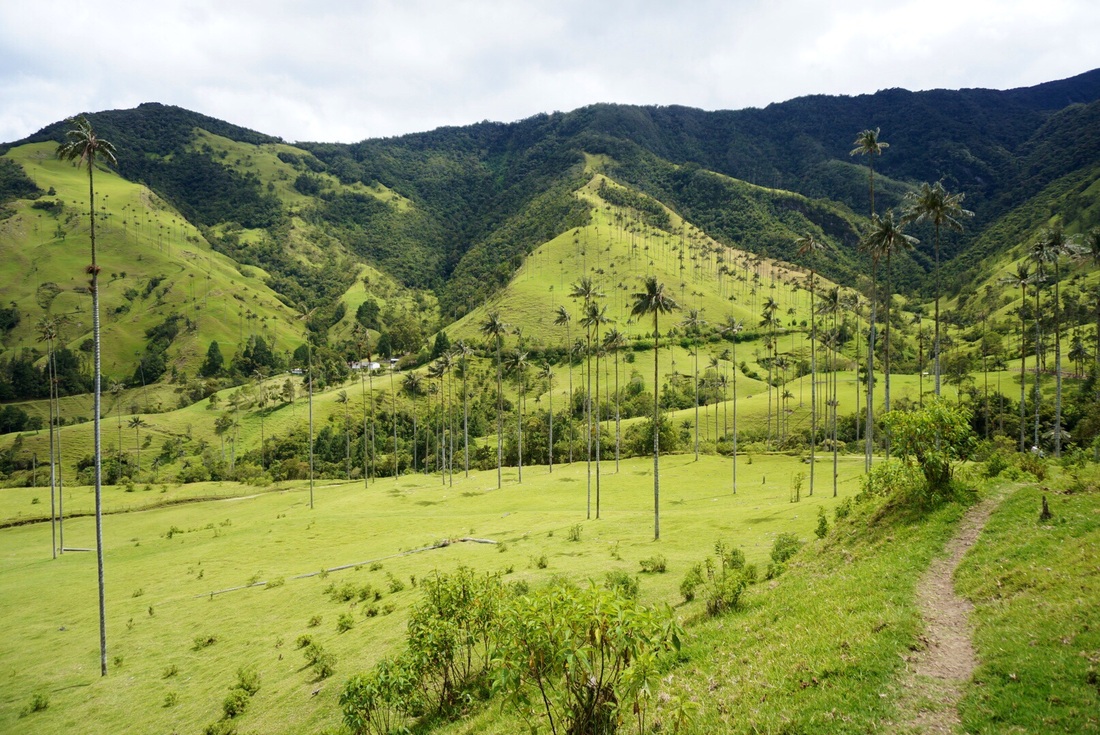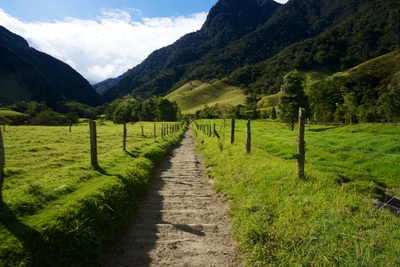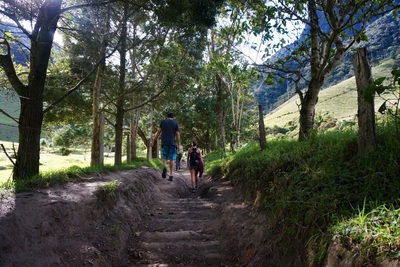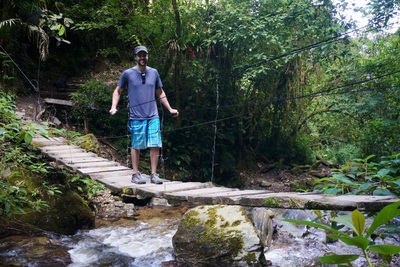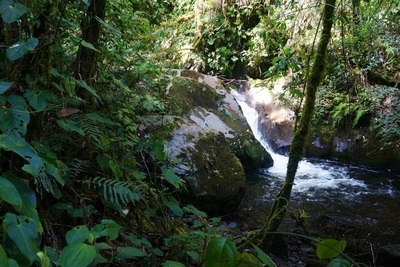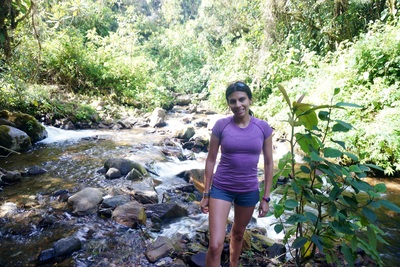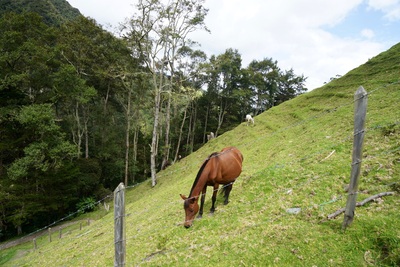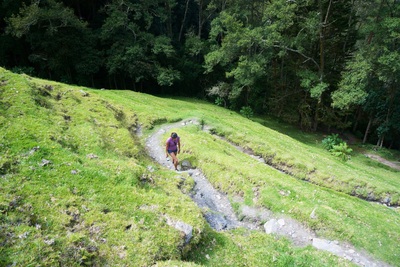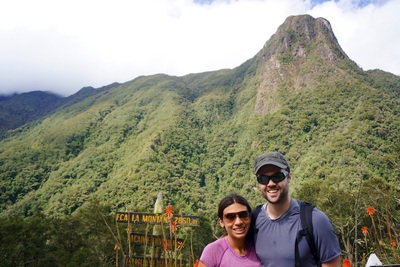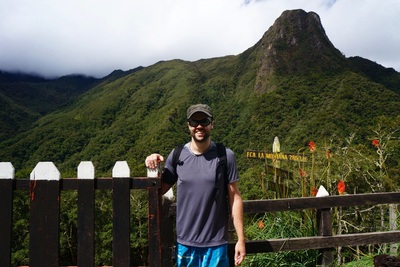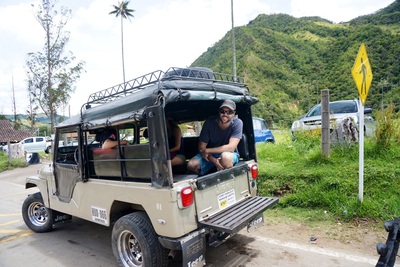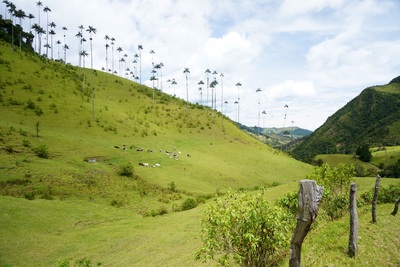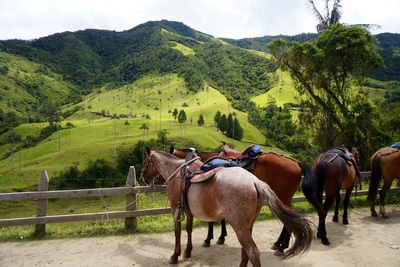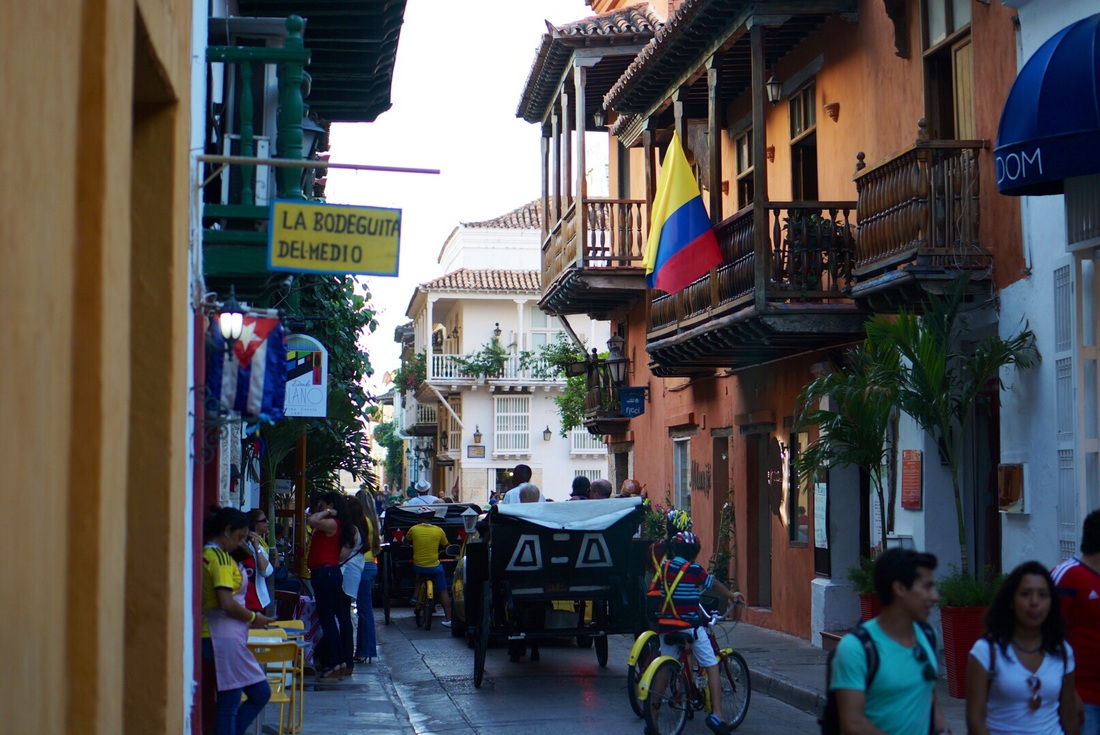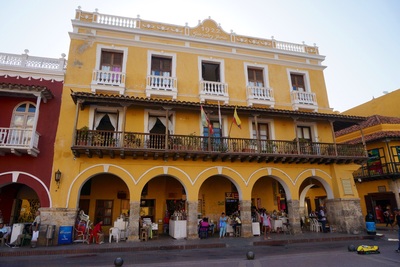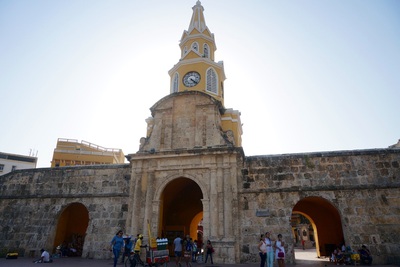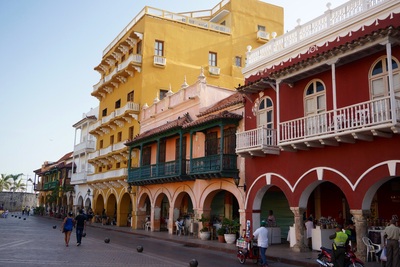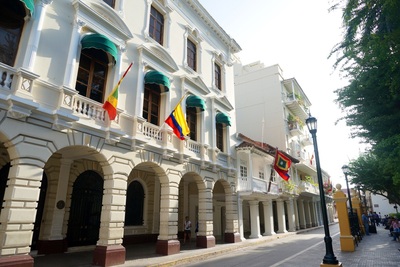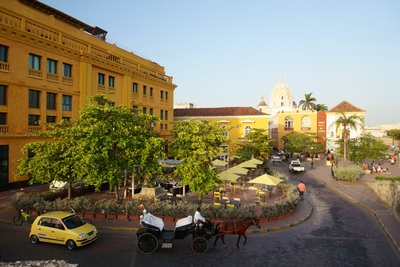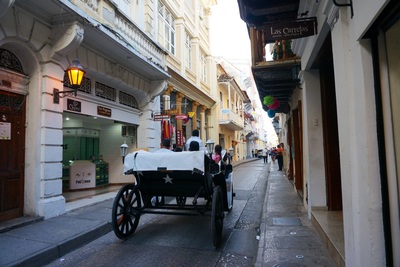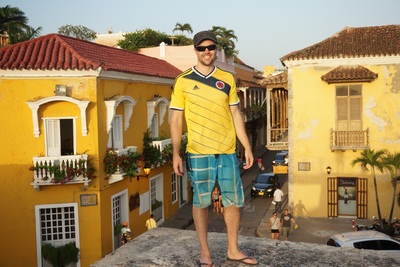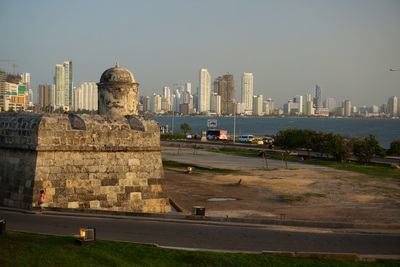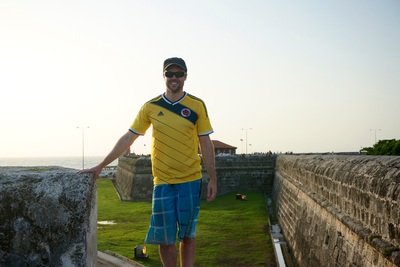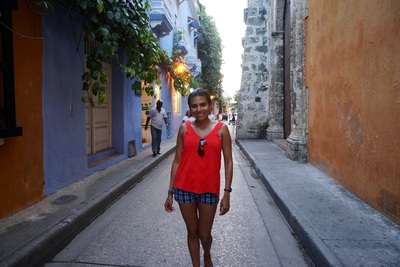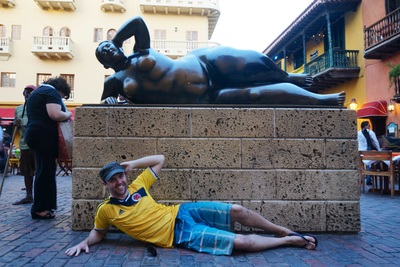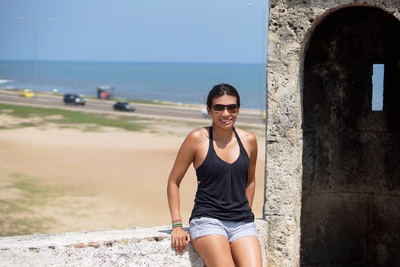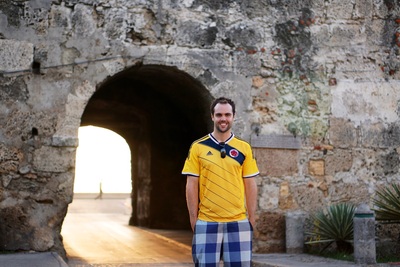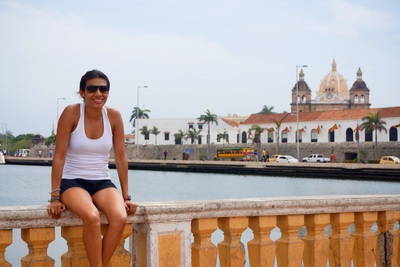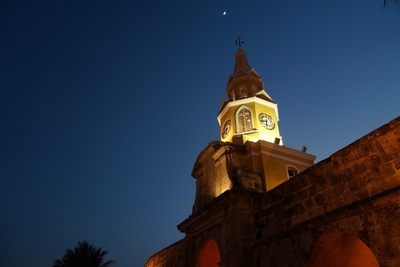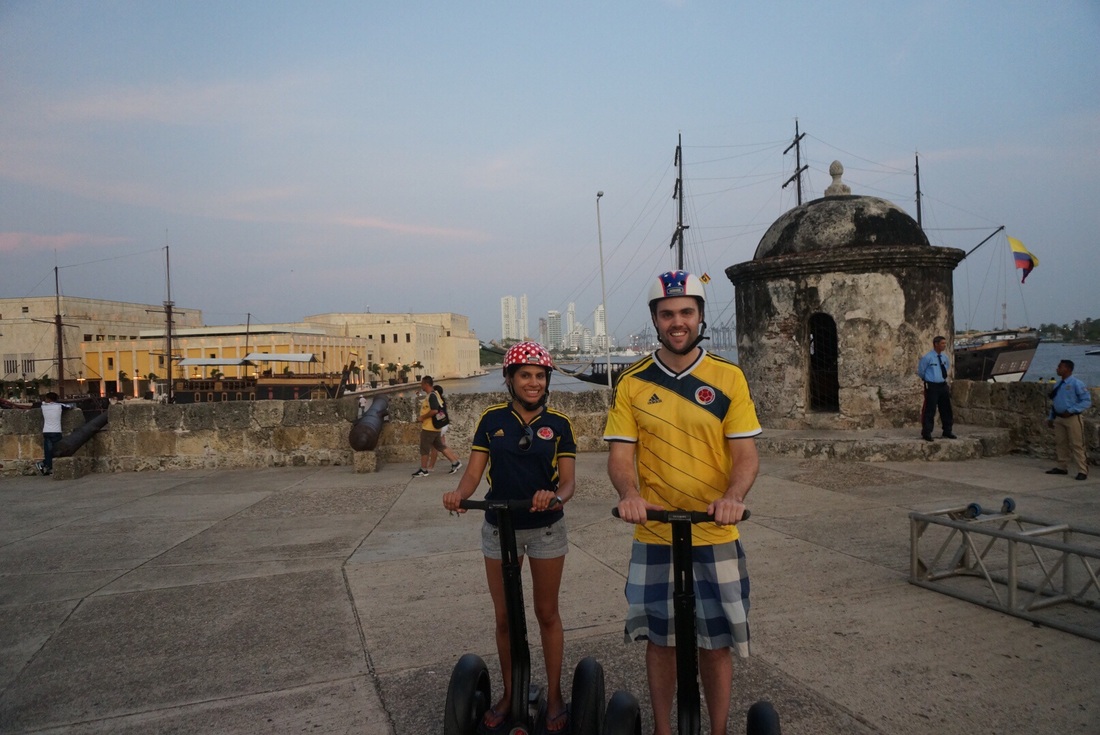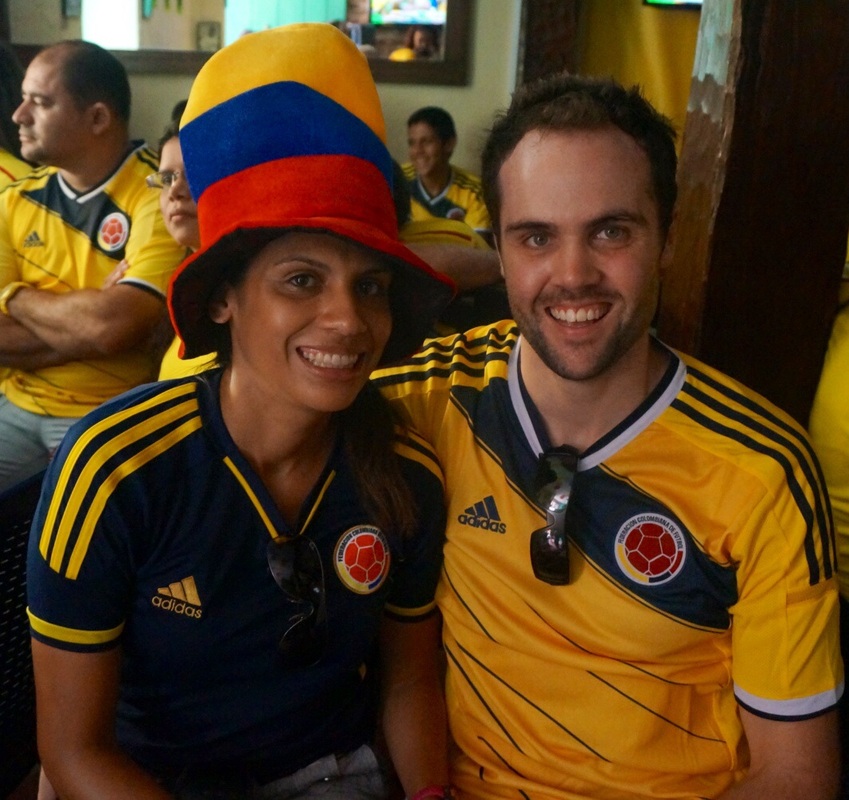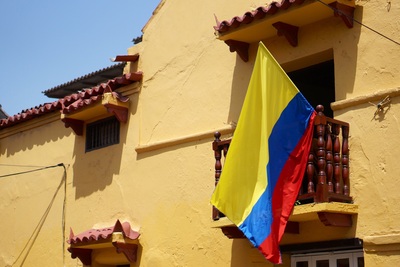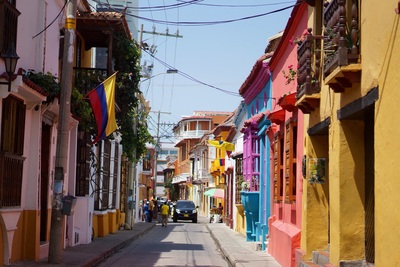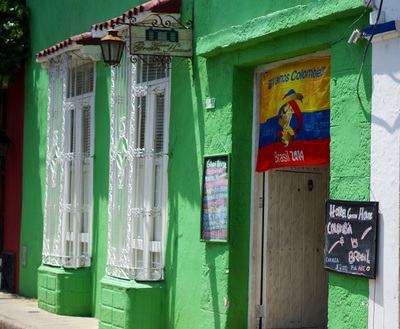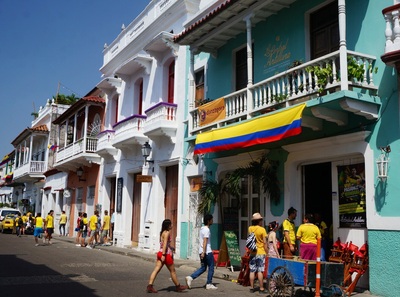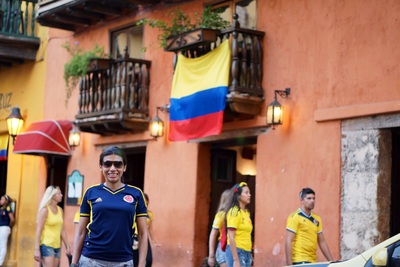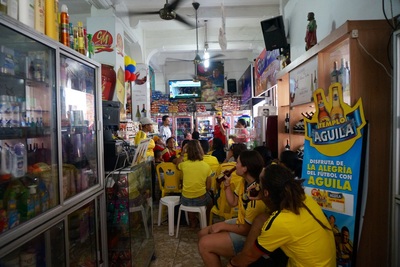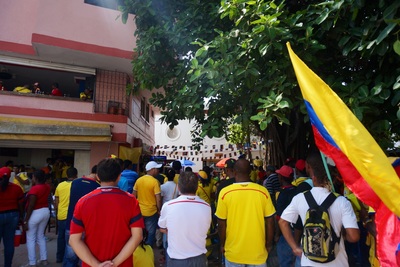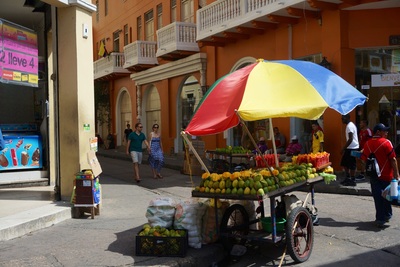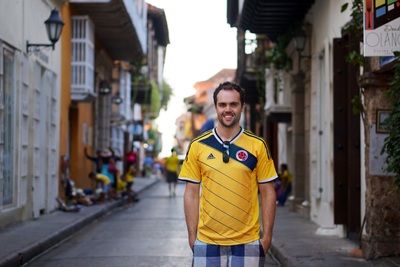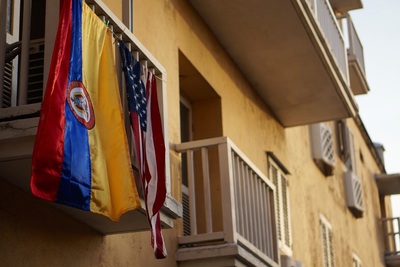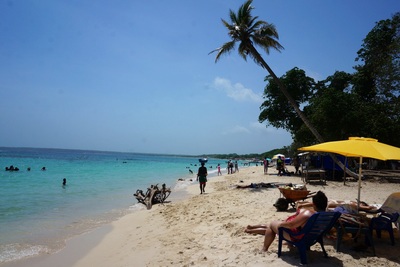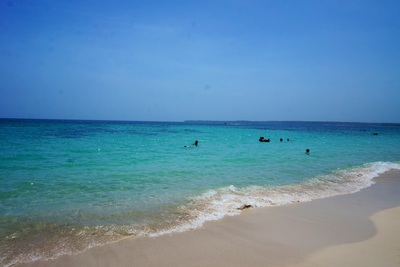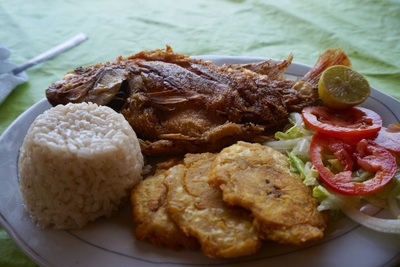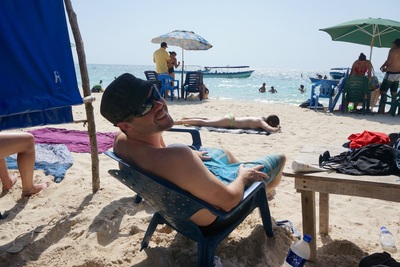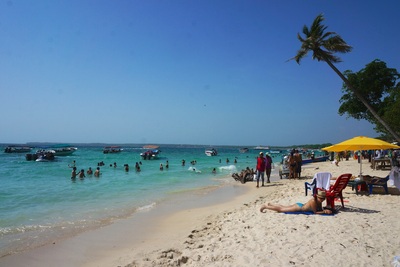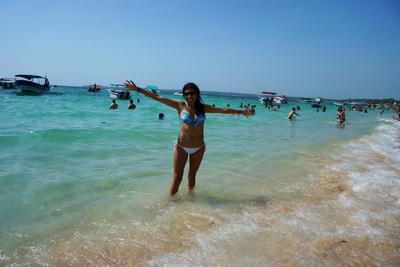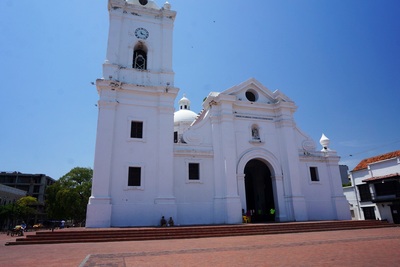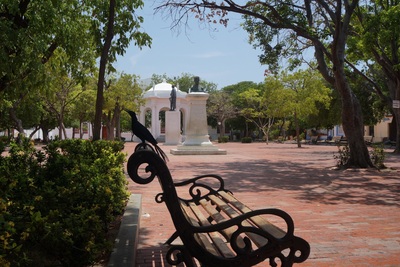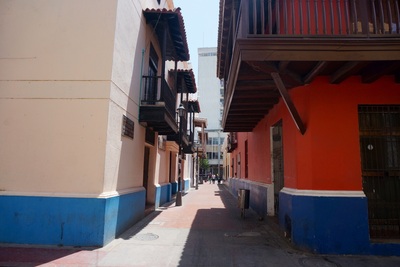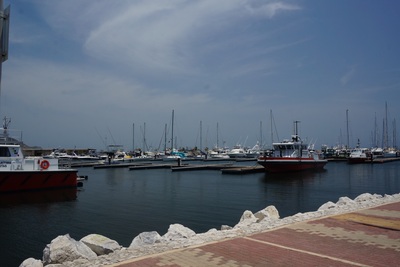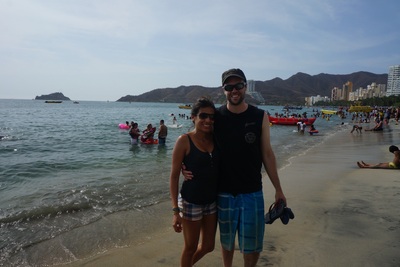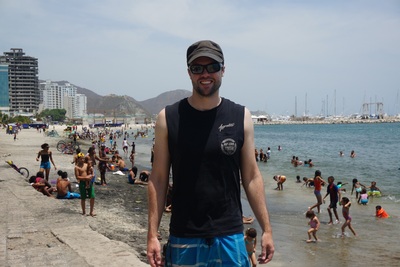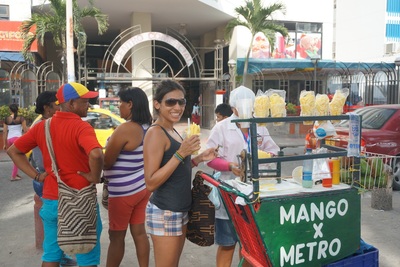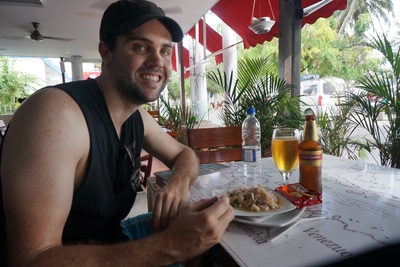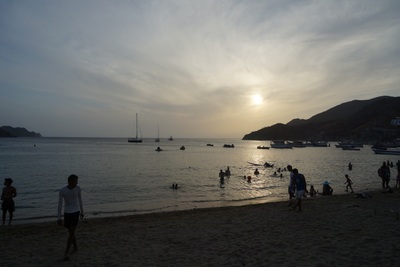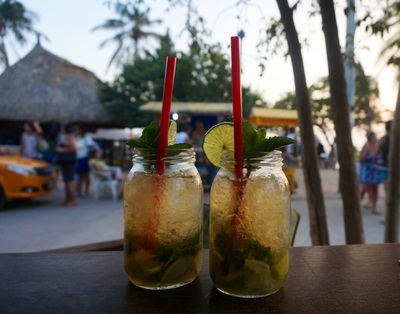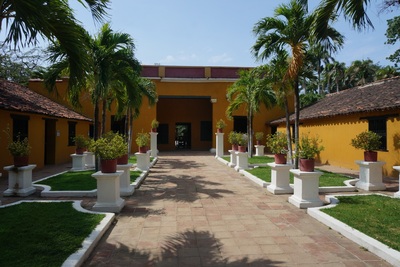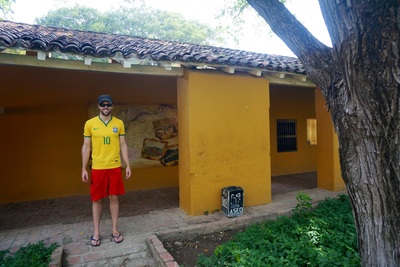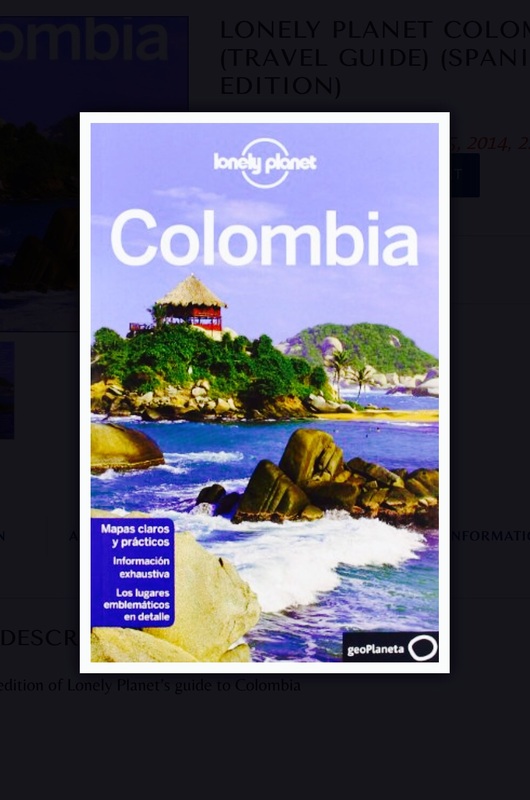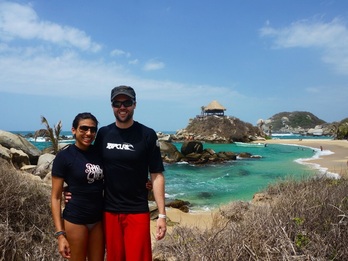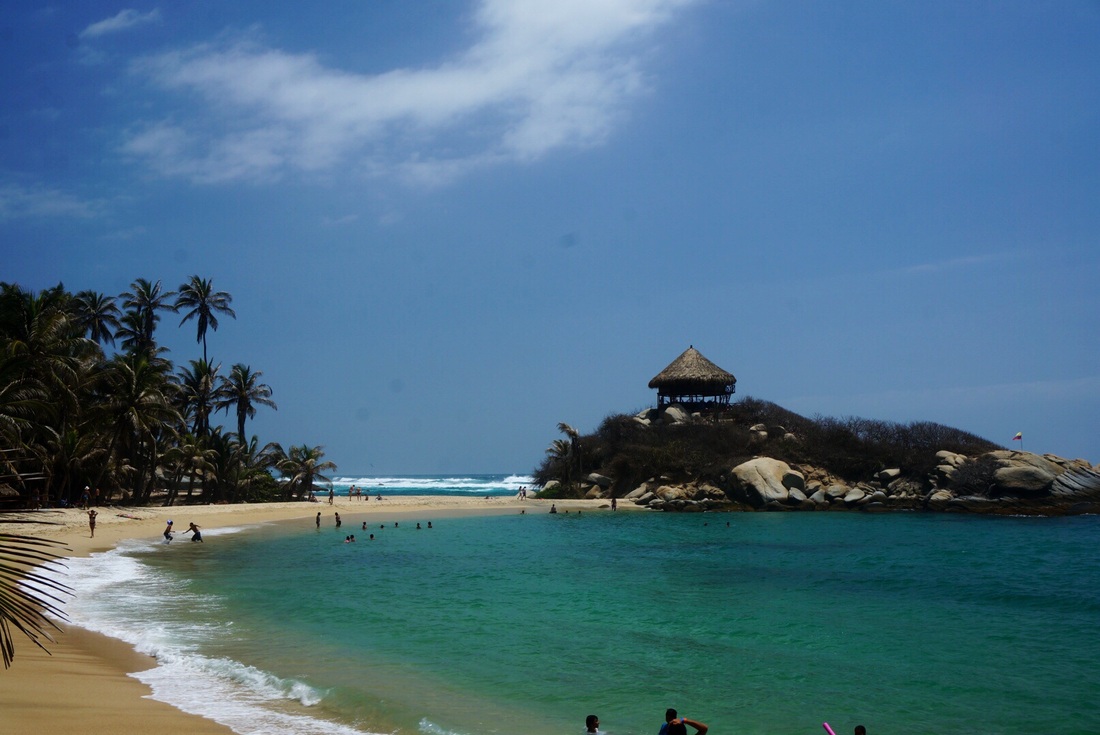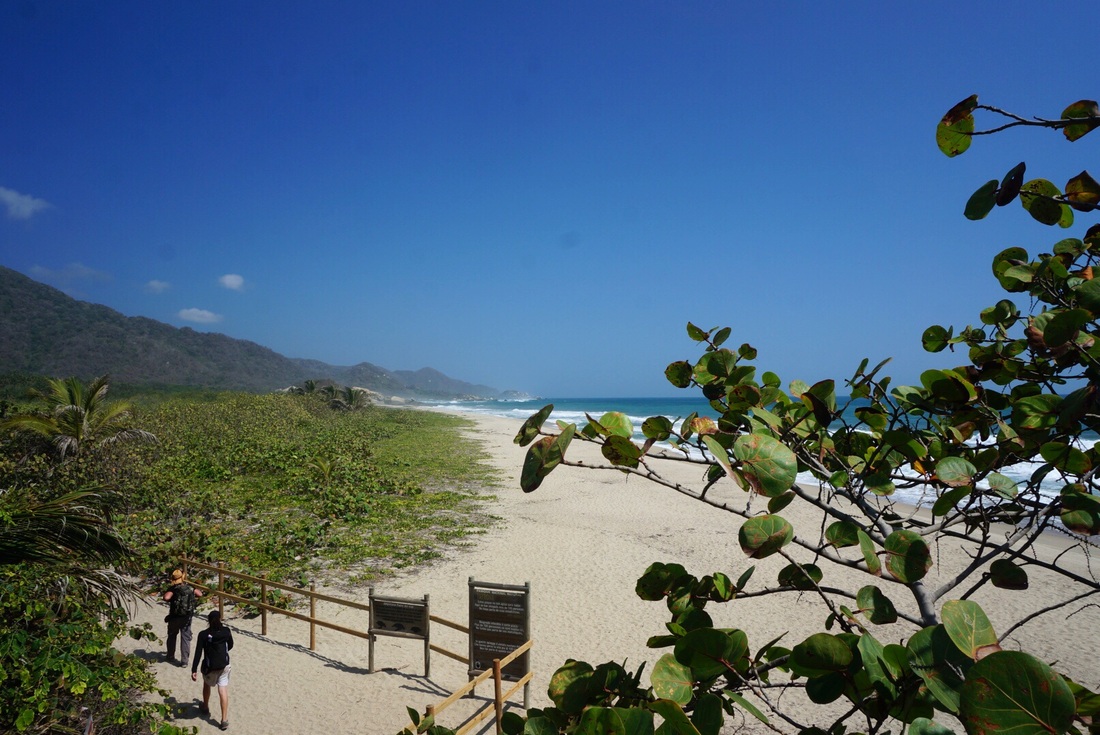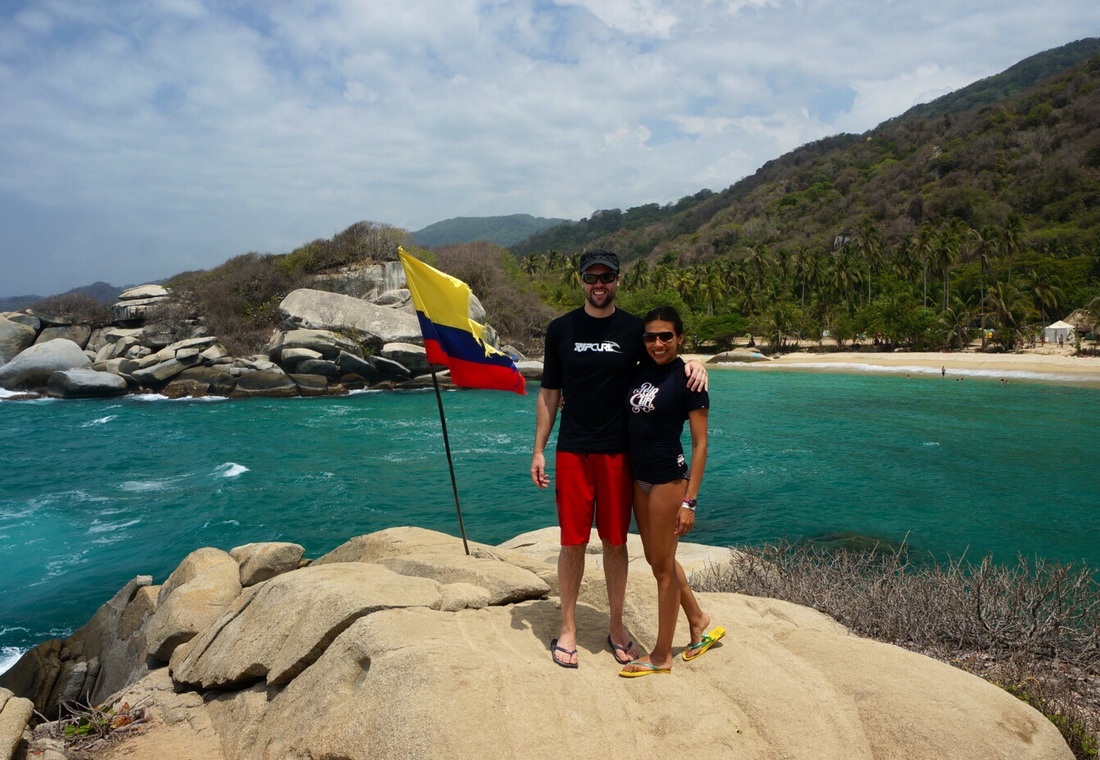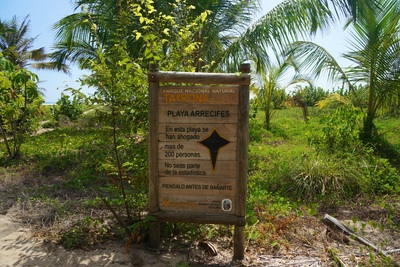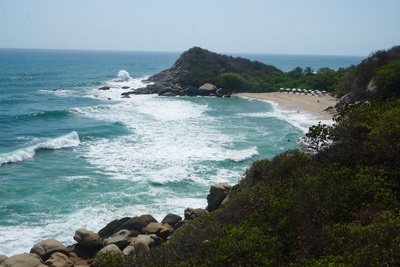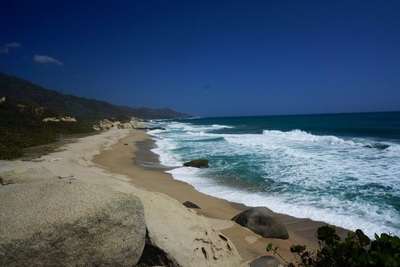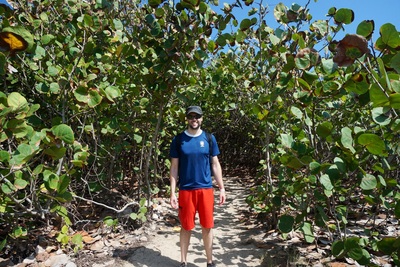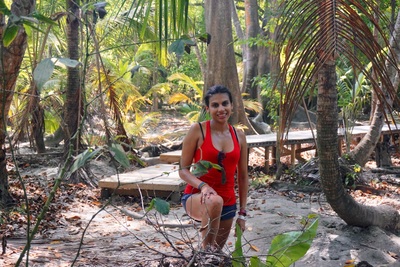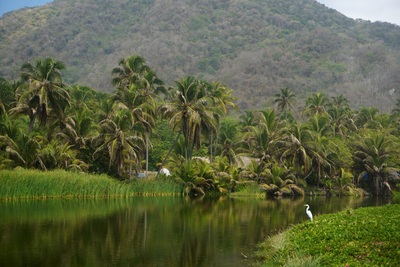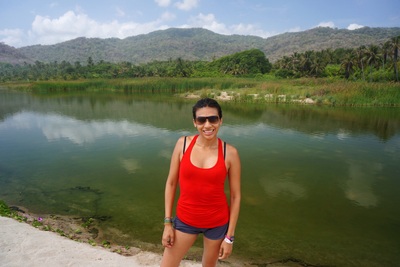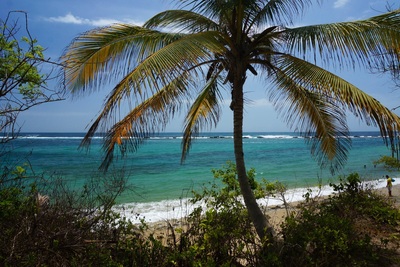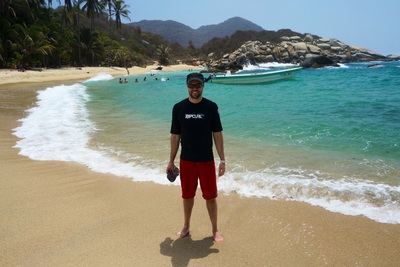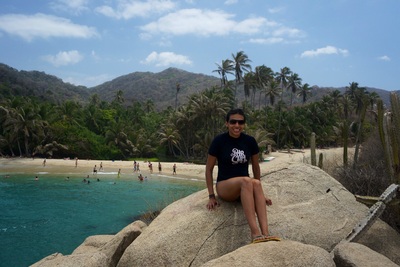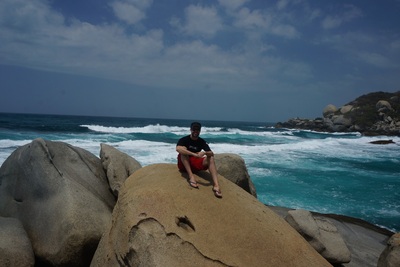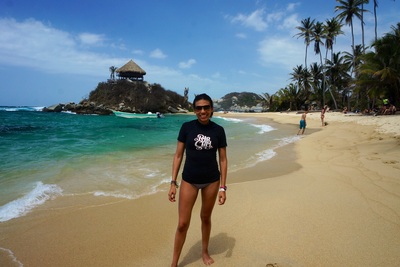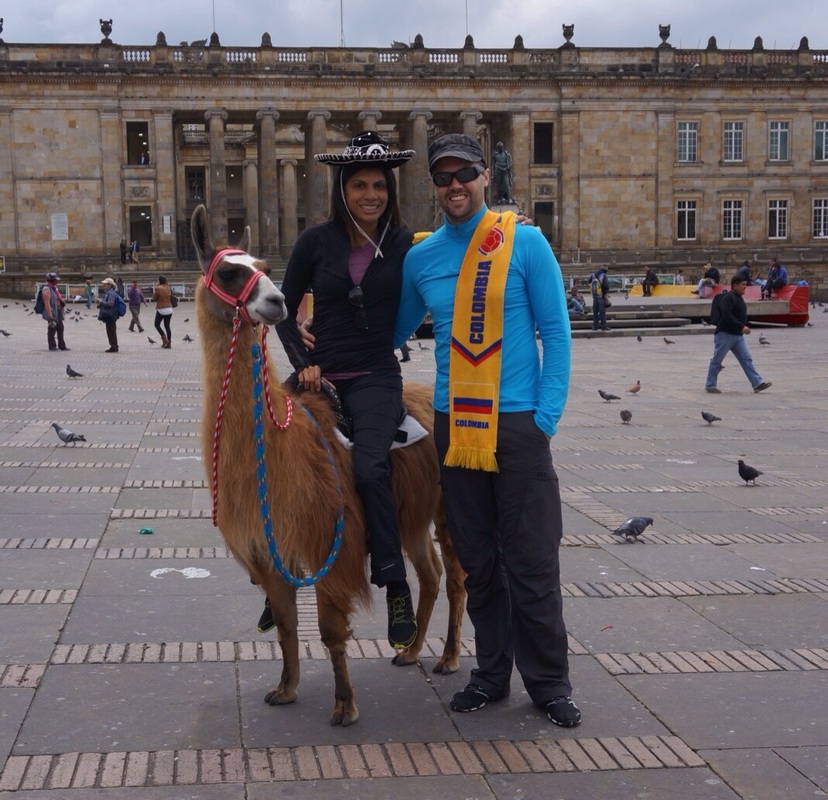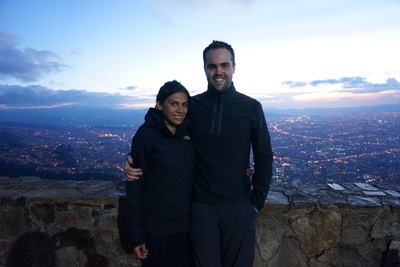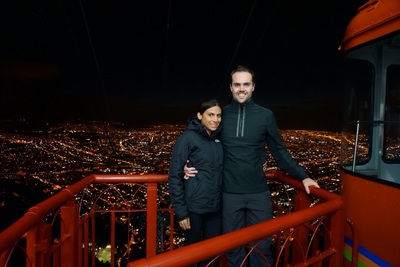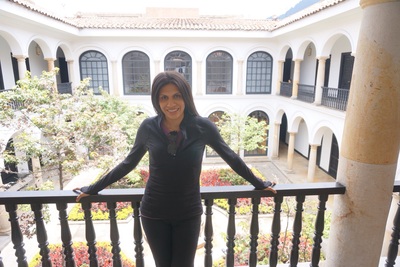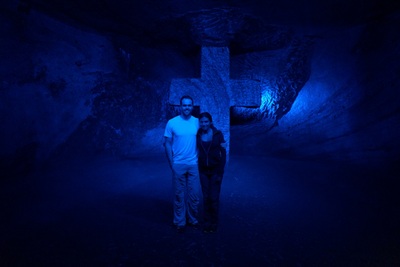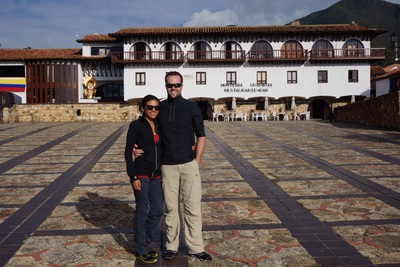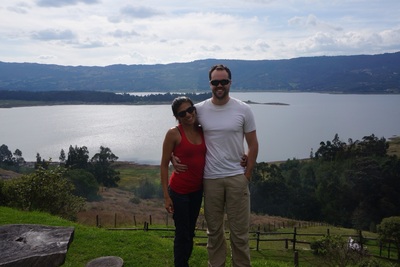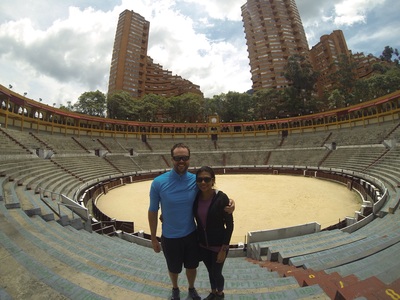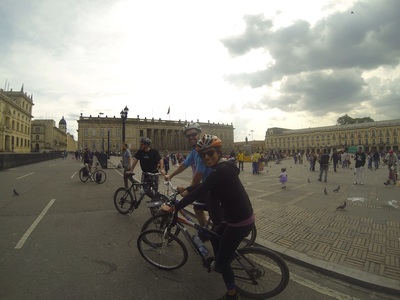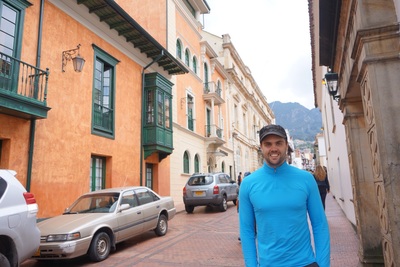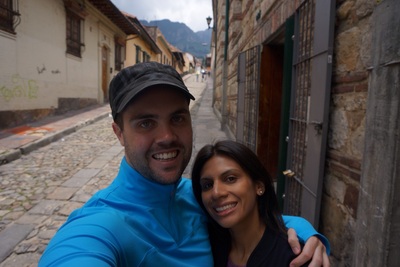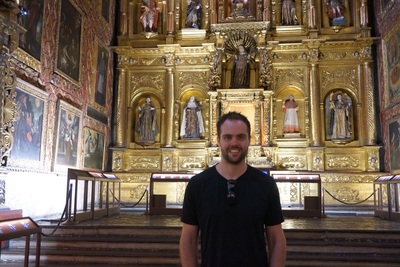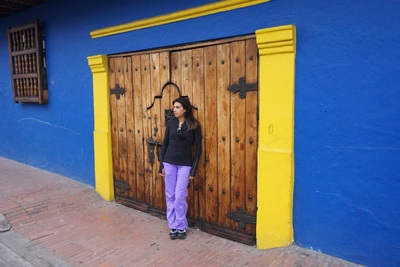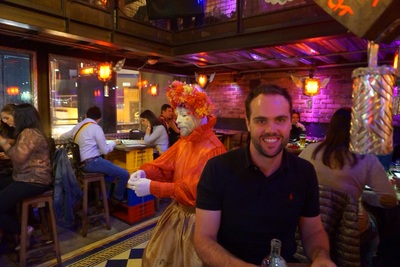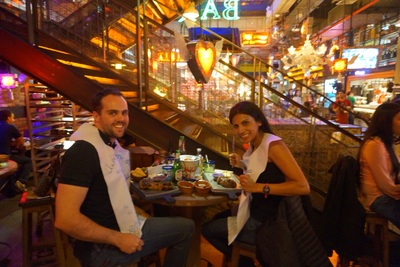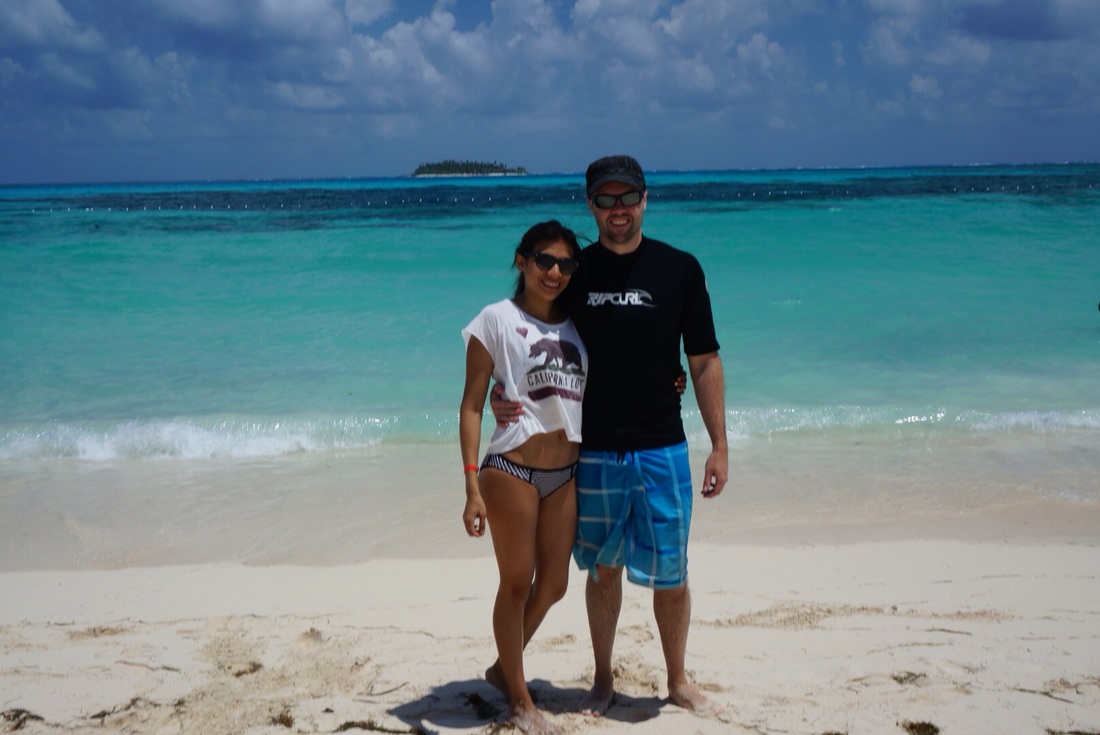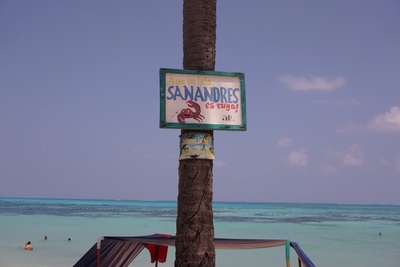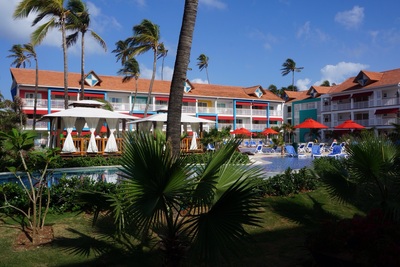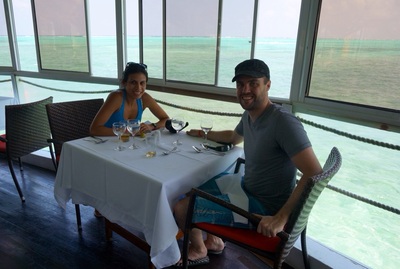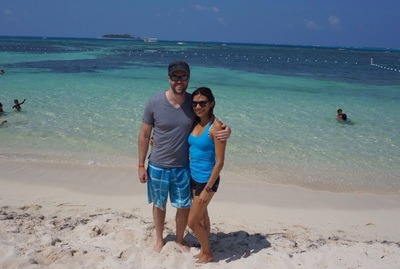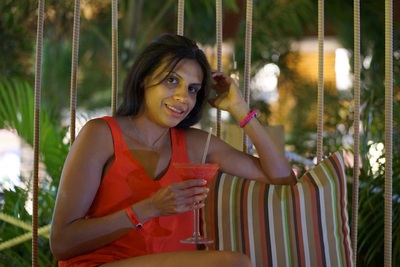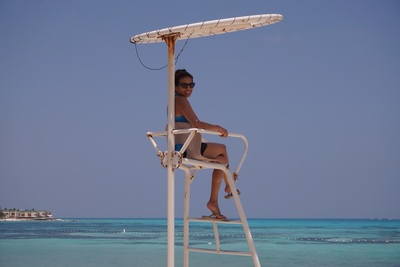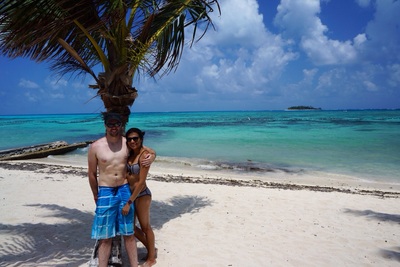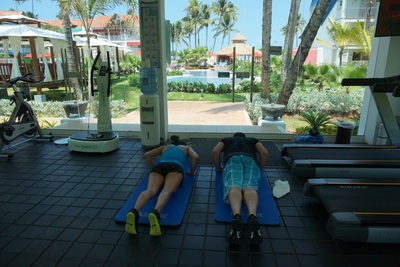We initially weren’t too sure whether visiting Medellin was a good idea. The city is still most famous as the place Pablo Escobar called home during the peak of his powers in the late ‘80s and early ‘90s, when Medellin was awarded the dubious title of world’s most violent city.
We had heard that Medellin had changed a lot since those days, and by taking an excellent walking tour of downtown we were able to understand both how the city earned its dangerous reputation and how it has worked hard to turn things around. A key to the transformation has been turning criminal slums into public parks and libraries. Another key has been building a progressive public transport system, featuring Colombia’s only metro system as well as cable cars and escalators that enable poorer people in the hills to come to, and feel part of, the city. This urban planning resulted in Medellin being named as the world’s most innovative city last year. We found that the best way to appreciate the scale and impact of these initiatives was to ride the free cable car over the slums to the top of Medellin.
We had heard that Medellin had changed a lot since those days, and by taking an excellent walking tour of downtown we were able to understand both how the city earned its dangerous reputation and how it has worked hard to turn things around. A key to the transformation has been turning criminal slums into public parks and libraries. Another key has been building a progressive public transport system, featuring Colombia’s only metro system as well as cable cars and escalators that enable poorer people in the hills to come to, and feel part of, the city. This urban planning resulted in Medellin being named as the world’s most innovative city last year. We found that the best way to appreciate the scale and impact of these initiatives was to ride the free cable car over the slums to the top of Medellin.
During the darker Escobar years, an interesting ritual developed in very religious Medellin, where hired guns would go to church both before clocking-on for their commandment-breaking day job (to say they know what they were about to do was wrong) and afterwards (to be completely cleansed of their sins). Although there aren’t as many hitmen anymore, prostitutes of all types (ladies, men and somewhere in between) still station themselves outside city churches, allowing their clients to complete their cleansing ritual.
Paisas, the residents of Medellin and surrounding areas, have always been known as proud people (other Colombians would say too much so). We got the impression that Paisas are particularly proud of their city’s resurgence. The Medellin metro, a central symbol of the transformation, is the only public transport either of us have ridden anywhere that has absolutely no graffiti. Although we’re definitely not trailblazers (tourists have been increasingly coming to Medellin for over a decade), the locals still seemed genuinely pleased to be seeing us in their city, with many stopping to say hi. In-fact the closest encounter we had with a dodgy looking character in Medellin was a guy who approached our walking tour group and said, in intoxicated spanish, ‘I know I’m a junky but I just wanted to say hi and I hope you enjoy your stay’.
Paisas, the residents of Medellin and surrounding areas, have always been known as proud people (other Colombians would say too much so). We got the impression that Paisas are particularly proud of their city’s resurgence. The Medellin metro, a central symbol of the transformation, is the only public transport either of us have ridden anywhere that has absolutely no graffiti. Although we’re definitely not trailblazers (tourists have been increasingly coming to Medellin for over a decade), the locals still seemed genuinely pleased to be seeing us in their city, with many stopping to say hi. In-fact the closest encounter we had with a dodgy looking character in Medellin was a guy who approached our walking tour group and said, in intoxicated spanish, ‘I know I’m a junky but I just wanted to say hi and I hope you enjoy your stay’.
The welcoming theme continued when we visited a local Crossfit gym. At the start of the workout the coach introduced us and gave a really nice long speech about Crossfit being a global community. When after the class we asked if they had any t-shirts for sale, instead of just saying ‘no, sorry’, the coach tried to offer Sam the shirt off his back. Of course we couldn't accept that, so instead we arranged to come back a few days later to pick up some shirts and have another workout (although they didn’t let us pay for any of it).
The day after our workout we woke up with very sore legs, so our timing wasn't great to take a day trip to the nearby small town of Guatape, where the main attraction is climbing 740 steps to the top of a 200 meter high granite monolith. At least the view from the top of the surrounding lakes and green hills was worth the pain. The town of Guatape itself was also definitely worth a visit, featuring a fairy tale mix of cobblestone streets and colorful buildings.
While in Medellin we also took a day trip to the more historic Colonial town of Santa Fe de Antioquia, which was established in 1541 and has been very well preserved. Although less colorful than Guatape, the town featured plenty of beautiful streets, buildings, churches and plazas.
The most famous legal Colombian export is coffee, and the vast majority of the stuff is grown in the highlands between Medellin and Bogota. Cindy, in particular, didn’t want to leave Colombia without visiting this region. We chose to stay in Salento, a tiny town that was built along a key trade route but was cut off when the route was diverted. The result is a beautiful small town that feels like it has been frozen in time, although perhaps not for too long as it is an increasingly popular destination for Colombian weekenders and backpackers from around the world.
On our first full day in Salento we rented bikes and rode down a steep dirt road to take a tour of a boutique organic coffee farm. Our tour guide took us through the whole coffee production process, and was able to explain to us why we hadn’t found as much good coffee in Colombia as we had expected. Apparently when coffee pods are extracted from their shells and put in a bath of water, the good quality coffee (which sinks) is separated from the not so good stuff (which floats). Because Colombians are generally reluctant to pay big money for coffee, the cheap stuff stays in the country and the nicer stuff is exported to more discerning, and less price sensitive, coffee addicts around the world.
The next day we headed to Salento’s other main attraction, the nearby Corcora Valley. Lonely planet calls this valley a lush, tropical version of Switzerland. Although Sam thought this analogy was a bit of a stretch, the valley certainly is beautiful in its own way and is well worth a visit. The first half of our hike was through dense forest, following and regularly crossing - often on rickety one-person-at-a-time bridges - a small rapid-lined river. At the midway point the trail climbed steeply out of the shade to La Montana, offering views of the beautiful valley below. For us the highlight was on the way back down the mountain when we walked through a massive field of 60-meter high palms. After powering through the supposedly day long hike before lunch, we returned to Salento for a relaxed last afternoon and evening in the beautiful town.
The next day we headed to Salento’s other main attraction, the nearby Corcora Valley. Lonely planet calls this valley a lush, tropical version of Switzerland. Although Sam thought this analogy was a bit of a stretch, the valley certainly is beautiful in its own way and is well worth a visit. The first half of our hike was through dense forest, following and regularly crossing - often on rickety one-person-at-a-time bridges - a small rapid-lined river. At the midway point the trail climbed steeply out of the shade to La Montana, offering views of the beautiful valley below. For us the highlight was on the way back down the mountain when we walked through a massive field of 60-meter high palms. After powering through the supposedly day long hike before lunch, we returned to Salento for a relaxed last afternoon and evening in the beautiful town.
After a long bus trip back to Medellin we caught a flight over the Darien Gap to Panama City, marking the end of 18 unforgettable weeks in South America. We wouldn’t claim to have done the whole continent, with the main omissions being a wintery Patagonia and the politically unfriendly Venezuela, but we hope to visit both at more suitable times in the future. Otherwise, we managed to knock a whole bunch of items off our bucket list and we had a lot of fun along the way. That said, we’re definitely not ready to drop the backpacks and return to our western professional lives yet. Next stop Central America!
